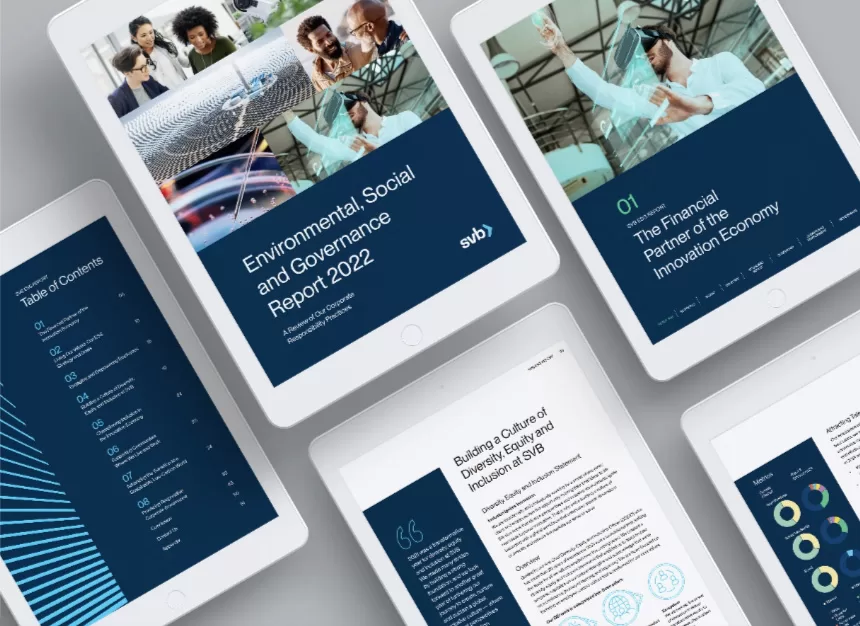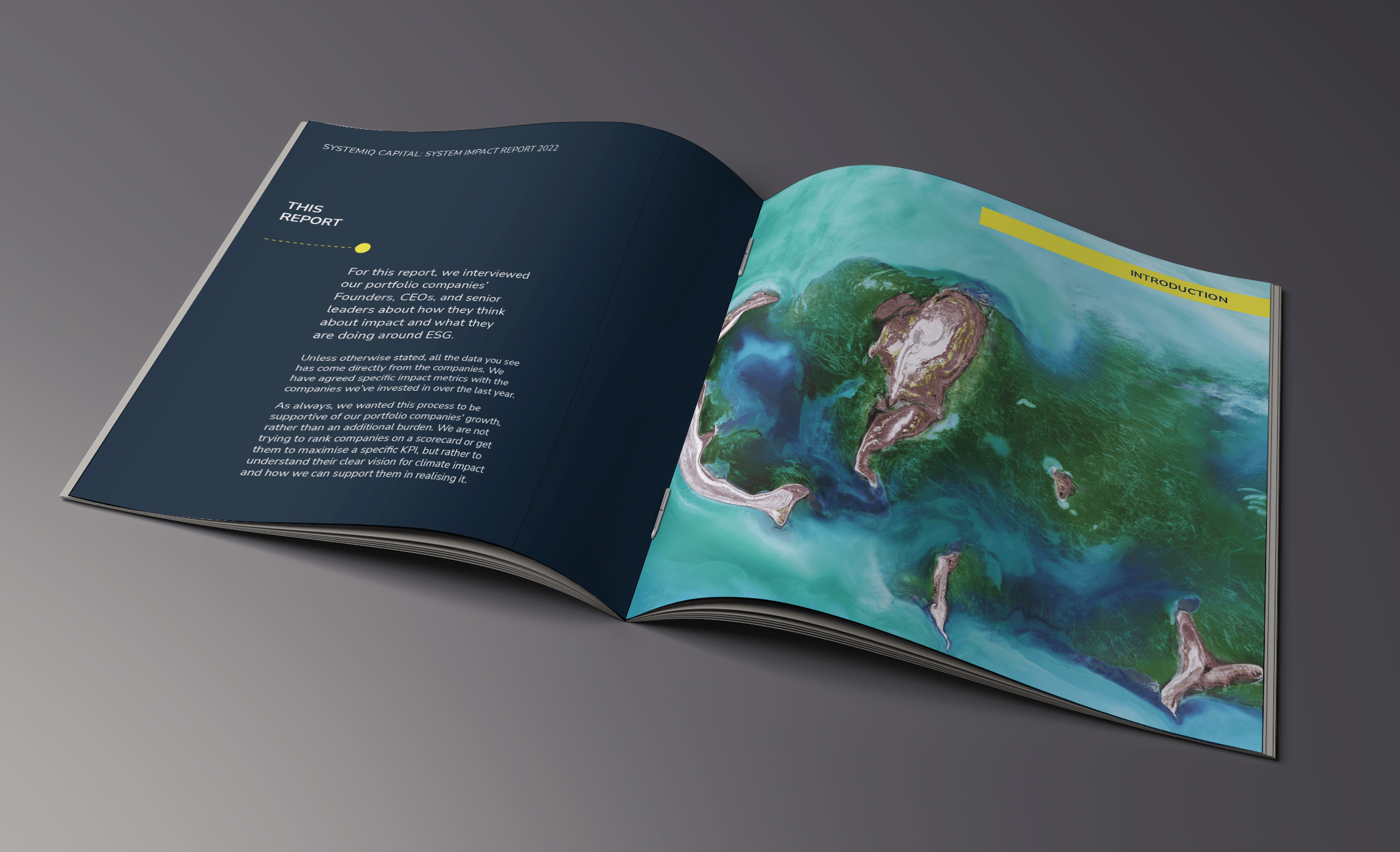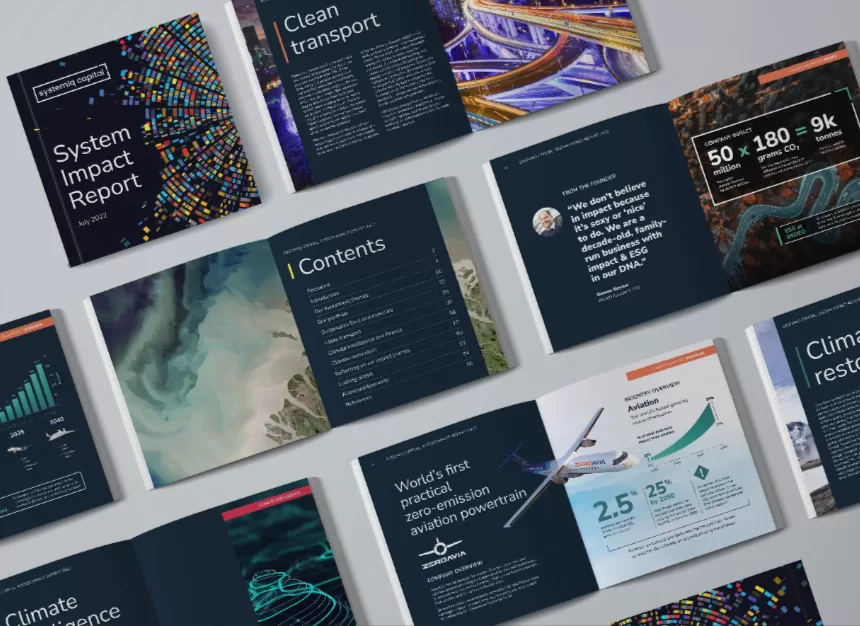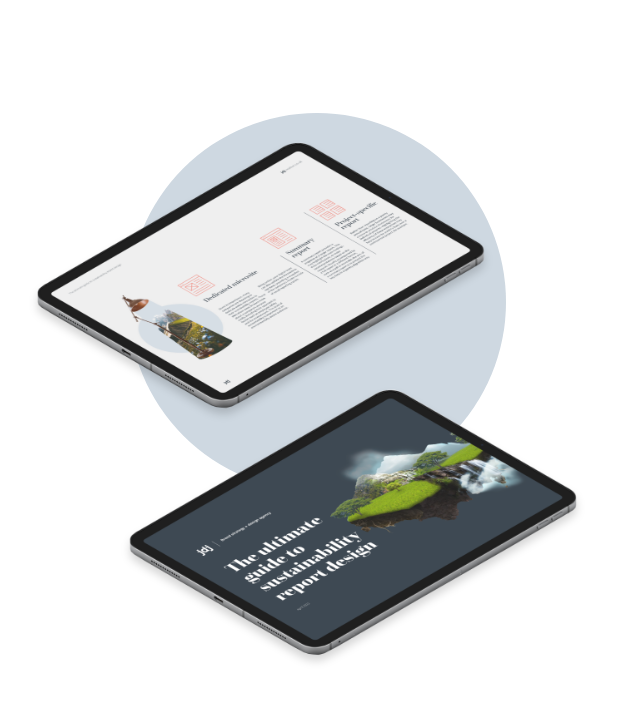Because these reports are not currently required by law, there are no universal requirements for what information to include in a sustainability report. That being said, these documents often follow similar formats, with these elements often featured:
In this article, we look in-depth at some of the components that make up your report.

As in annual financial reporting, the foreword (or letter from the CEO) presents an opportunity for the company’s figurehead to introduce the organisation’s vision, explain the reasons for reporting and provide his or her insight into the previous year’s performance. Due to the overview it provides, this is one of the most read – and therefore most important – pages of a sustainability report.
Typically one of the most prominent pages in a site’s architecture, it represents an early opportunity to both set the tone of the report, and quickly establish trust between reporter and reader. In the past, research has shown a disconnect between the sentiment of CEO letters and the actual results included within the report. Greenwashing in this way is not a useful approach and is one that may weaken confidence.
Rather it is important to present a balanced and honest view of the company’s performance. Where mistakes were made, it’s important to own them, with lessons learned resulting in positive outcomes.
Being authentic in your statements is also more beneficial for the business as a whole, as it encourages recognition of areas of concern and provokes thought about ways in which you can plan to improve results in the future. Attempting to indicate that all is well when the figures suggest otherwise is both misleading and counterproductive for all involved.
Key themes to include in the CEO’s letter include:
By speaking directly to stakeholders, you can establish connections through these words. With this in mind, it’s important that this is personable and respectful. Any attempt to deceive the audience will result in mistrust, which would bring further scrutiny to your reportings.
Finally, there is also an opportunity here to align the sustainability and financial reports, through recognisable common themes, further promoting an integrated approach to ESG goals.
In today’s society, brand purpose is as important, if not more so, than a brand’s products or services. Why you exist is as important to consumers as what you offer. An effective ‘North Star’ or guiding principle ensures you can create value for every stakeholder, above simply increasing profits. Brands are powerful, and consumers increasingly want them to stand for issues that are important to them.
By highlighting the issues you’re passionate about and how you can use these ideologies to make a difference, you need to communicate them. This section allows you to both state your purpose and demonstrate how you live these values in real-world situations.
Your purpose is an ongoing commitment to living these values in everything you do. It should already be identifiable through your communications and designs at all touchpoints of a buyer’s journey. This may be through straplines, imagery and PR. But it also needs to be demonstrated through actions.
This is your opportunity to formally state your purpose and promote how you’re embracing it every day. The proof is the business decisions you make and the motivations behind them.

This section of the report provides the opportunity to present your sustainability strategy, highlighting your priorities, why they’re worthy of focus, how sustainability fits in with your wider corporate strategy and how you intend to improve results.
A business’s sustainability strategy is the framework of agreed actions that will allow a business to drive performance and improve sustainability metrics. It can be a short list of issues that can be realistically addressed (being hyper focussed is better in most cases), but it needs to have targets that can be measured and evaluated.
In the same way that return on ad spend (ROAS) is measured to determine the success of a campaign, sustainability issues need to be monitored, with clear KPIs identified for each aspect.
By effectively laying out and reporting on these goals you will:
In order to create a sustainability strategy, your organisation needs to consider the issues affecting long-term sustainability. From these issues, you can prioritise those which will have the biggest impacts on your company, both sustainably and commercially.
Once these issues are known, short- and long-term goals can be set, with risks to their success being identified and planned for. Once integrated into a broader corporate strategy, procedures should be put in place to collect data and report on the findings.

“

Because there are currently no legal requirements for sustainability reporting, there is no official standardised framework at this time. There are, however, a number of standards by which the largest corporations measure themselves, including the Task Force on Climate-related Financial Disclosures (TCFD), the Global Reporting Initiative (GRI), the Sustainability Accounting Standards Board (SASB) and the International Integrated Reporting Council (IIRC). By applying these reporting standards, the figures can be more easily analysed year-on-year and quickly compared across reports. They also add a layer of accountability to any disclosure made as it matches up to recognised standards.
Read more: How to measure sustainability
The need to align disclosures with a relevant reporting standard is essential to provide an unbiased and holistic view of a company’s ESG efforts. However, positive sustainability success stories can provide context to your data. Talking about individual case studies provides the opportunity for commentary, indicating issues and steps taken to rectify them. When used to describe a controversial project, these words can put investors and the public’s minds at ease. This is not an opportunity to greenwash your audience, but rather highlight the positive impact some of your initiatives are having.
Are you looking to publish your first sustainability report, or improve the design of your current offering?
Download our guide to sustainability report design and learn:
✅ The most popular reporting frameworks and how to use them
✅ The five key steps to successful sustainability reporting
✅ Our top tips for excellent report design
If you want to partner with an external agency, JDJ has over 10 years of experience designing reports for financial, educational, professional and technology companies in the UK and the US. Knowledgeable about the major sustainability reporting frameworks and with a proven track record of producing reports which inspire investors, consumers and internal stakeholders alike, we’d love to help on your sustainability reporting journey.
Share
Sign up to our monthly newsletter to receive your guide to thought leadership design.

Sign up to our monthly newsletter to receive your guide to annual report design.

Sign up to our monthly newsletter to receive your guide to sustainability report design.
